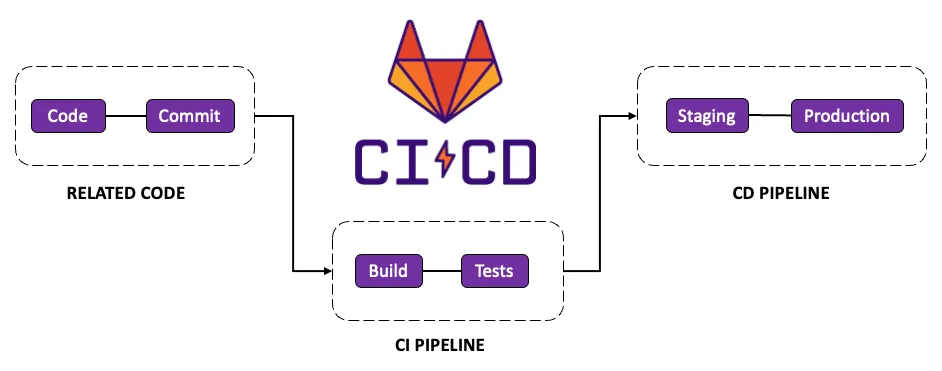In today’s hyper-connected environment, automating security in your CI/CD process isn’t optional—it’s imperative. For tech firms scaling agile development, leveraging GitLab’s pipelines to automate security tasks not only reduces risk but also streamlines your development lifecycle. In this article, we dive deep into five critical GitLab pipelines that every tech firm should implement. We’ll use advanced examples, so buckle up for a technical deep dive.
1. Static Application Security Testing (SAST) Pipeline
Static Application Security Testing (SAST) is essential for catching vulnerabilities in your source code before runtime. GitLab’s built-in SAST capabilities can be integrated into your pipeline, but for advanced use cases, consider customizing the workflow to include multiple analyzers and aggregate reports.
Example: Here’s a complex .gitlab-ci.yml snippet that integrates multiple SAST tools and consolidates the results:
stages:
- build
- test
- security
sast:
stage: security
image: docker:latest
services:
- docker:dind
variables:
SAST_EXCLUDED_PATHS: "vendor,node_modules"
SAST_DEFAULT_ANALYZERS: "semgrep,brakeman"
script:
- echo "Running SAST tools..."
- semgrep --config=auto --output=sast-semgrep-report.json
- brakeman -q -o sast-brakeman-report.json
artifacts:
paths:
- sast-semgrep-report.json
- sast-brakeman-report.json
allow_failure: true
only:
- merge_requests
- master
This pipeline stage uses Docker-in-Docker to run multiple SAST tools, excludes noisy directories, and allows the pipeline to continue even if a vulnerability is found (flagging the result for review).
2. Dynamic Application Security Testing (DAST) Pipeline
Dynamic Application Security Testing (DAST) analyzes your running application, providing insights that SAST cannot detect. Integrate a DAST stage into your pipeline to scan your staging environment with a robust toolchain.
Example:
stages:
- build
- test
- security
- deploy
dast:
stage: security
image: registry.gitlab.com/gitlab-org/security-products/dast:latest
script:
- echo "Initiating DAST scan on staging environment..."
- dast --target "http://staging.example.com" --timeout 600
artifacts:
reports:
dast: gl-dast-report.json
variables:
DAST_WEBSITE: "http://staging.example.com"
only:
- master
This configuration leverages GitLab’s DAST image to scan the staging environment for vulnerabilities and produces a JSON report for further analysis.
3. Dependency Scanning Pipeline
Dependency scanning is crucial for identifying vulnerable libraries and outdated packages that can compromise your application. GitLab offers templates for dependency scanning, but a custom pipeline can integrate multiple scanning tools for comprehensive coverage.
Example:
stages:
- build
- test
- security
dependency_scanning:
stage: security
image: node:14
script:
- npm install
- npx retire --outputformat json > dependency-report.json
- snyk test --json-file-output=snyk-report.json || true
artifacts:
paths:
- dependency-report.json
- snyk-report.json
allow_failure: true
only:
- master
This stage runs multiple dependency scanning tools (Retire.js and Snyk) and outputs reports that can be integrated into your security dashboard. Note the use of allow_failure to ensure the pipeline doesn’t block releases while highlighting issues.
4. Container Scanning Pipeline
As containerization becomes standard, scanning your container images for vulnerabilities is non-negotiable. A well-configured container scanning pipeline can help you catch misconfigurations and known vulnerabilities before deployment.
Example:
stages:
- build
- test
- security
container_scanning:
stage: security
image: registry.gitlab.com/gitlab-org/security-products/container-scanning:latest
script:
- /analyzer run
artifacts:
reports:
container_scanning: gl-container-scanning-report.json
variables:
CONTAINER_IMAGE: "$CI_REGISTRY_IMAGE:$CI_COMMIT_REF_SLUG"
only:
- master
This job utilizes GitLab’s container scanning image to automatically scan the built container image for vulnerabilities. The output is stored as an artifact for later review.
5. Security Orchestration and Custom Remediation Pipeline
While GitLab offers built-in security scanning, automating remediation through security orchestration can drastically reduce mean time to resolution (MTTR). This pipeline stage integrates custom scripts and leverages GitLab APIs to trigger automated remediation tasks.
Example:
stages:
- build
- test
- security
- remediation
security_orchestration:
stage: remediation
image: python:3.9
script:
- pip install requests
- python scripts/trigger_remediation.py
only:
- master
The accompanying Python script (scripts/trigger_remediation.py) might look like this:
#!/usr/bin/env python3
import requests
import os
GITLAB_API_URL = os.environ.get('CI_API_V4_URL')
PROJECT_ID = os.environ.get('CI_PROJECT_ID')
PRIVATE_TOKEN = os.environ.get('GITLAB_PRIVATE_TOKEN')
def trigger_remediation(vulnerability_id):
url = f"{GITLAB_API_URL}/projects/{PROJECT_ID}/issues"
payload = {
'title': f'Remediate Vulnerability {vulnerability_id}',
'description': f'A vulnerability with ID {vulnerability_id} has been detected. Please review and remediate.',
'labels': 'security,remediation'
}
headers = {'PRIVATE-TOKEN': PRIVATE_TOKEN}
response = requests.post(url, data=payload, headers=headers)
if response.status_code == 201:
print(f"Issue created for vulnerability {vulnerability_id}")
else:
print("Failed to create remediation issue:", response.text)
# Example: trigger remediation for a vulnerability identified in a scan report.
trigger_remediation("CVE-2022-12345")
This advanced stage not only identifies vulnerabilities but also takes proactive steps to create remediation tasks in GitLab Issues. By integrating with the GitLab API, you can automate the feedback loop and prioritize security fixes.
Conclusion
Automating security in your CI/CD pipeline is essential for maintaining a robust DevSecOps culture. The five pipelines described above—SAST, DAST, Dependency Scanning, Container Scanning, and Security Orchestration—form the backbone of an effective automated security strategy in GitLab.
While the examples provided are complex, they reflect industry best practices for securing your codebase and infrastructure. Integrating these pipelines not only improves your security posture but also minimizes manual intervention, allowing your teams to focus on innovation without compromising on safety.
By embracing these advanced security pipelines, tech firms can significantly reduce risk, streamline vulnerability management, and ensure that security is baked into the development process from the ground up.
